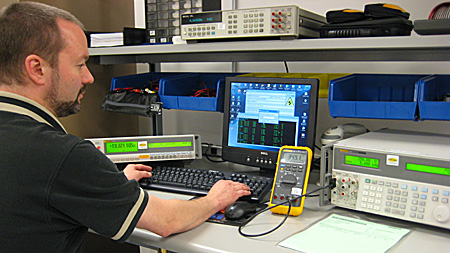What is Calibration and Why is it Important?
What is Calibration?
Imagine a watch with seconds pointer that requires longer than a second to tick it means the watch will not show the right time and defeat its objective altogether. In such a scenario,What is Calibration and Why is it Essential? Articles the watch would need to have to undergo a correction in its instrument setting. Just placing it, once the seconds pointer is repaired or corrected the watch starts displaying appropriate time. Applying the very same concept to an industrial instrument and its subsequent repair is known as calibrating the instrument. Therefore, Calibration is the setting or correcting of a measuring device or base level, commonly by adjusting it to match or conform to a dependably identified and unvarying measure. The calibration procedure normally requires using the instrument to test samples of a single or a lot more known values referred to as ‘calibrators’ just like any equipment that could be utilized to repair a watch.
Why is Calibration vital?
Instrument Calibration is a necessary and essential aspect of any instrument system & process instrumentation and one of the most critical primary processes that guarantees instrument accuracy. A method plant is created up of quite a few instruments like transmitters and controllers that can lead to drift and lead to inaccurate readings for the handle and safety of other instruments, instrument calibration becomes of foremost significance.
How is Calibration Carried out?
To fully grasp calibration process, we will need to initial have an understanding of that most instruments do not perform in isolation. They perform collectively in a cluster, also identified as “loop” in business parlance. So calibration basically means calibrating instruments in a loop. Mainly because of difficult interconnection, loops regularly undergo drift which demands their calibration.
If you want to calibrate instruments in a loop there are two techniques of going about it – you can either calibrate every of the instruments individually (recognized as person calibration) or you can calibrate the loop as a complete (known as loop calibration).
what does a calibration lab do is one of the earliest known methodologies. This primarily means removing the instruments from their loop and individually calibrating them, although one of the greatest recognized strategies, this is time consuming and can lead to errors in connections.
Loop calibration is, hence, a extra trustworthy strategy. A loop calibration is a set of instruments that are grouped and calibrated collectively. The input and output of the whole group determines the pass or fail status of the calibration. This means, if there is an error in one particular it will lead to a domino effect of errors on all other instruments that are part of the loop. Loop calibrator thus demands a special sort of calibrator, recognized as loop calibrator, that is equipped to deal with and successfully calibrate instruments in loop. Loop calibrators, can again, be portable (i.e. handheld) or stationary. Portable calibrators are extra well-known, naturally since they are additional practical to use.
Individual calibration is also not quite helpful in measuring extended time drifts, whereas a device that can deal with loop calibration will typically allow measuring lengthy time drifts which is significantly less time consuming and ensures higher accuracy.
